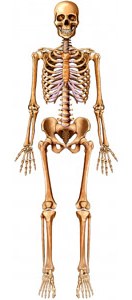Brittle bones
Description osteogenesis imperfecta
Brittle bones (BUT) – genetic problem, the presence of which can be easily broken bones, often not very apparent reason. There are currently, at least, eight forms of the disease. If you suspect, that you have this disease, consult a physician immediately. The earlier the treatment but also the beginning, the more favorable outcome.

Causes of osteogenesis imperfecta
But it is a genetic disease, is present at birth. It is caused by an abnormality of collagen.
Risk Factors osteogenesis imperfecta
A risk factor is something, which increases the likelihood of disease. If you have a family sick BUT, tell your doctor.
The symptoms of osteogenesis imperfecta
The four most common types but the symptoms may include:
- Fractures;
- Bone deformities;
- Small increase;
- The weakening of joints and muscle weakness;
- Sclera (whites of the eyes) may have a blue, purple or gray tint;
- Triangular face;
- The tendency to curvature of the spine;
- Brittle teeth;
- Hearing loss;
- Breathing problems;
- Bruising or bruises on the body.
Diagnosis of osteogenesis imperfecta
The doctor will ask about your symptoms and medical history, perform a physical examination. Doctor, probably, refer you to a specialist in bone diseases (orthopedist). If you have NO, the doctor can make a diagnosis based on inspection. Tests may include:
- Biochemical analysis of collagen;
- Genetic (DNA) tests, that may require a skin biopsy.
Osteogenesis imperfecta may affect fetal development. It can be detected by US gestation around 16 weeks. Also for prenatal diagnosis can be used chorion biopsy.
Treatment for osteogenesis imperfecta
Currently, there are no treatments for NO, so treatment is aimed at:
- Preventing health problems;
- Improved Mobility;
- The production of bone and muscle strength.
Besides, patients but can be used surgical procedure, which includes the insertion of metal rods into the long bones, to strengthen them and prevent and / or correct the deformation.
Prevention of osteogenesis imperfecta
But it is caused by a genetic defect. Generally, Anyone with a BUT 50% the likelihood of transmission of the disease to their children. Through genetic counseling, BUT the transfer from one generation to the next can be prevented.
Problems, Related but can be reduced or prevented by a healthy lifestyle, exercise and healthy eating. Avoid smoking and excessive alcohol consumption, which can lead to a weakening of bone tissue and increase risk of fracture.
